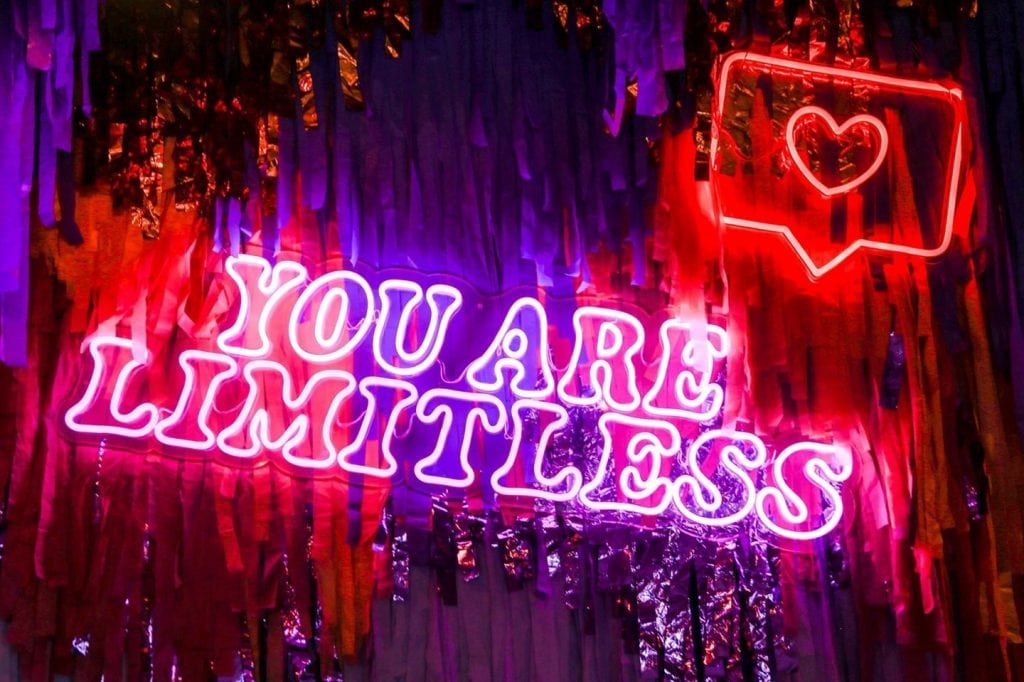To what extent do neon and LED signs differ, and which is preferable? Investments in LEDs and neon are two of the most frequent types of modern company signage. Both are illuminated by brilliant lights and can create pleasing hues. Do you have any idea which one is best for you?
While neon signs are still popular, LED signs have a number of advantages as well. To give just one example, LED signs seem to be more economical to run than their neon counterparts. Neon signs, however, are the way to go if you want your business's sign to last for a long time.
Both LED and neon signs are noticeable. However, depending on the context, one may be preferable to the other. Do you want a more affordable or a more visible sign? Is a business sign that uses less energy a priority for you? In this article, we will examine the differences and similarities between neon and LED signage.
What Are Neon Signs?
Neon signs use a special kind of light bulb that is both long-lasting and energy-efficient. It looks quite close to fluorescent illumination. Long fluorescent gas-discharge tubes are heated and bent into different shapes and letters to create them.
From the 1920s until the 1960s, neon signs were commonly used. However, in the 1990s, with the advent of LED technology, they were rendered unnecessary. There are neon signs in a range of colours, from the brightest blue to the softer pink.
The hues result from a small amount of mercury added to a gas tank of argon. Whenever an electric current flows between the electrodes of the tube, the atoms inside begin to glow.
Neon lights, in contrast to LED lights, are often housed in a glass tube that has been carefully created by hand. The energy released from the reaction with the inert gas produces a bright colour. While neon tubes are aesthetically pleasing, they are also easily broken.
The sign should include open circuit protection, which means that if the tubes are broken, the current will be cut off immediately to prevent any mishaps. Neon sign items are the most often used by companies of all sizes because of their protective safety mechanism and their attractive display.
Neon Signs’ Advantages
- The neon signage has a greater potential for longevity. The neon gas inside the sign has a lifespan of up to 15 years.
- Because of their ability to withstand a wide range of temperatures, neon signs can be used year-round, regardless of whether it's raining, snowing, or scorching outside. Signs made with high-quality neon tubing won't get too hot to the touch.
- Many neon signs offer a rainbow of colour choices. Almost every hue or tint is open to your imagination.
- Neon signs can be used with other materials such as plastic and glass. It's because neon has such a low melting point.
Neon Signs’ Disadvantages
- Some electrical components, such as the transformer, used in neon signs may fail before the sign itself does. Therefore, a higher-quality transformer should be a constant purchase.
- Inexpensive alternatives exist, however the cost of a neon company sign will increase depending on its size and intricacy. A neon sign, on the other hand, will cost more than a LED sign.
- Operating costs are higher for neon signs compared to LED displays. The annual operating costs for a standard LED sign are roughly $80, whereas those for a unique neon sign average around $228. It's meant as a rough estimate only; actual costs would depend on factors like electricity consumption and market rates.
What Are LED Signs?

LED stands for "light-emitting diode," which is shorthand for any device that produces visible light. These tiny individual Light-Emitting Diodes are packed tightly against a sturdy plastic base that can be moulded into any configuration.
For your company sign, it can be cut to the exact dimensions you require.
Strings of light-emitting diodes (LEDs) are used to construct LED lights and signage; their overlapping light output provides a constant glow. Most LEDs are covered by their own polymer jacket, making LED signs lighter and more durable than neon lights.
While neon signs typically merely require the glass tube to be replaced if broken, LED signs can be extremely finicky and difficult to repair. LEDs can only be attached in certain positions, therefore the lettering may look clumsy and unattractive in some cases. And unlike the diffused hues of a neon sign's illumination, the colours here are consistent.
LED Signs’ Advantages
- LED signage uses up to 75% less energy than traditional incandescent lights without sacrificing visibility or brightness. More so, they use less power than neon signs.
- LED business signage are on average 10% less expensive to create and acquire than neon ones.
- Neon signs cannot be modified after they have been hung. LED screens, however, allow for frequent content updates at no extra cost.
- Power Consumption: LED displays use 5-10 times less power than just a neon sign, leading to substantial savings over time.
- Neon tubes require frequent maintenance, including gas refilling, which would be best left to a (pricey) professional. LED signs, thankfully, are low-maintenance because they don't require this.
LED Signs’ Disadvantages
- LED signs are not as efficient as neon ones, therefore they don't produce as much light. However, it lacks the vivacity of neon displays.
- Never use LED signage in fog. Unlike LED signs, traditional neon signs may be seen through fog.
LED Vs. Neon Signs: Which is Better?
Let's cut to the chase and discuss the core issues. For starters, let's take a closer look at the differences between LED and neon signage. The next step is to decide if neon or LED signs would be more effective.
Price
LED signage is more cost effective over time while having identical upfront prices as neon lights. There is a difference in price between neon and LEDs, but it varies depending on the size and style you choose.
So, the amount of light you need determines the price difference between neon and LED signs.
LED is around 10% cheaper than neon for large outdoor installations. You should think about whether or not the savings are worthwhile, though.
Material
You probably associate bright lights with neon more than LED. They both generate illumination, but their disparate methods of processing that illumination give each its particular visual character.
Unlike fluorescent signs, neon signs employ actual glass tubing. LED signs, on the other hand, are made from light-emitting diode strips that, when hung in a row, simulate the look of neon. Due to the polymer casing that surrounds each LED diode, they can be a pain to repair if they ever break.
Power Usage
However, even if neon signs have become more efficient in recent years, they still consume more power than LED signs. LEDs are the most efficient kind of lighting or signage since they require less auxiliary power than neon signs.
Large neon displays may need as much as 15,000 volts to light up, yet LEDs only need 24 volts. So, if you're thinking between neon and LED lights for a massive outdoor event, you might want to go with the former.
If you need a sign or a modest light display for your business, the operational costs of LED and neon lighting are almost the same. As a result, the two are very similar. The amperage used is a good indicator of a device's energy efficiency; a typical neon sign draws less than 1 amp.
Maintenance
LED signs have a substantially reduced total cost of ownership and require almost no upkeep. Neon signs, however, are more difficult to maintain, particularly in areas where snow and ice are common. Furthermore, maintenance issues necessitate the involvement of a competent specialist, which may increase costs.
Safety
Neon signs use high voltage and real glass tubing, so there's always a chance they could shatter if thrown away improperly. In contrast, LEDs are completely risk-free due to their lack of heat production and invulnerability to shock. Mercury and phosphorus are two chemicals that are not present in LED signs.
Brightness
LED signs provide a whiter, bluer, and less attractive light than their neon counterparts. However, neon signs are much more noticeable from greater distances.
There's been some debate about the best lighting method, and if you're going to splurge on a personalized sign, you should get the real deal. When window shopping, keep in mind that neon signs emit a continuous beam of light that may be seen from quite a distance.
Light-emitting diodes, on the other hand, can be pointed in a specific direction. This implies that, like a flashlight, the light it emits is focused in front of the device. An LED sign will have what is known as a hotspot, or uneven lighting.
Accessibility
The versatility of neon signs extends to their colour palette and the designs they support. They can be relied upon to provide consistent, around-the-clock support for your business.
Applications
Neon lights can be found both indoors and out, serving as both decorative and informative messages. This is why neon signs are commonly seen in public places like pubs and restaurants. Many people today employ neon signs in their houses' ceilings, floors, and walls to spruce up the decor and provide a unique spin on the traditional family domicile.
Neon signs aren't only for bars and clubs; photographers utilize them in their studios to capture striking images of their subjects.
LED signs are typically utilised for business-related purposes, such as internal company communications and outdoor storefront promotions. LED signage is widely utilised in both indoor and outdoor locations, including but not limited to factories, banks, warehouse, restaurants, hospitals, hotels, clothing stores, car dealerships, and shopping malls.
Curb Appeal
Businesses all throughout the world continue to use neon signs because the light they produce has a welcoming, comforting quality. Simply looking at the neon sign makes one think of classic glamour.
LED lights, on the other hand, are quite bright, but they can be a bit sterile and unpleasant to the sight.
The dynamic and eye-catching glow that neon signs provide has ensured their continued popularity among companies worldwide. As a package, neon is interesting to most artists because of its associations with the past and the high social position it suggests. In contrast, LED signs are both environmentally friendly and cost-effective for those who can't afford real neon.
Which is Better?
The primary factor in deciding between neon and LED signs is the intended use of the sign. If your company has a vintage feel and you want unique signage but are worried about costs, neon signs are indeed a great option.
If you need signs for the outdoors that give off the impression of neon but don't want to break the bank, a LED neon sign is the way to go.

The selection of what kind of sign to get is a significant one. Let our professional business sign designers as well as installers help if you're experiencing trouble. If you need a new sign for the company, we can help. We have the experience, knowledge, and state-of-the-art tools necessary to make the design process quick and easy.
The final decision as to whether neon or LED signs are better for a home or company depends on the individual's taste. Think on the major benefits of both to help you decide, but remember that you are the one who has to live with your choice. If you buy a sign and aren't impressed by it, it probably won't do anything to attract customers. Rather than focusing on efficiency or expense, it is more important to consider the aesthetic value of each option.
Conclusion
Many businesses today use neon or LED signs to advertise their products and services. Both can produce beautiful tones when bathed in bright light. What's the best option for your company though?
Hand-blown glass tubes are used to encase the neon bulbs. A vivid hue results from the release of energy during the reaction with the inert gas.
The weather has no effect on the visibility of neon signs, so they can be used year-round. Without compromising on brightness or readability, LED signs can save up to 75% more energy than their incandescent counterparts.
LED signs are more durable than neon signs because most LEDs are encased in a polymer jacket that protects them from damage. Regular maintenance, such as gas refilling, is necessary for neon signs and is best left to experts. The initial investment for a large outdoor installation of an LED sign is about 10% less than that of a neon sign.
Neon signs are more difficult to maintain because they use actual glass tubing. The lack of heat production and shock resistance of LEDs makes them completely safe. Cost-effectiveness-wise, LED and neon lighting are very similar. The constant stream of light from neon signs allows them to be seen from great distances. LEDs, on the other hand, can be aimed in a certain way.
Content Summary
- To what extent do neon and LED signs differ, and which is preferable?
- Investments in LEDs and neon are two of the most frequent types of modern company signage.
- While neon signs are still popular, LED signs have a number of advantages as well.
- Neon signs, however, are the way to go if you want your business's sign to last for a long time.
- In this article, we will examine the differences and similarities between neon and LED signage.
- The neon gas inside the sign has a lifespan of up to 15 years.
- A neon sign, on the other hand, will cost more than a LED sign.
- Operating costs are higher for neon signs compared to LED displays.
- Never use LED signage in fog.
- Unlike LED signs, traditional neon signs may be seen through fog.
- The next step is to decide if neon or LED signs would be more effective.
- Price LED signage is more cost effective over time while having identical upfront prices as neon lights.
- LED is around 10% cheaper than neon for large outdoor installations.
- So, if you're thinking between neon and LED lights for a massive outdoor event, you might want to go with the former.
- If you need a sign or a modest light display for your business, the operational costs of LED and neon lighting are almost the same.
- There's been some debate about the best lighting method, and if you're going to splurge on a personalized sign, you should get the real deal.
- When window shopping, keep in mind that neon signs emit a continuous beam of light that may be seen from quite a distance.
- A LED sign will have what is known as a hotspot, or uneven lighting.
- Accessibility The versatility of neon signs extends to their colour palette and the designs they support.
- They can be relied upon to provide consistent, around-the-clock support for your business.
- This is why neon signs are commonly seen in public places like pubs and restaurants.
- LED signs are typically utilised for business-related purposes, such as internal company communications and outdoor storefront promotions.
- The primary factor in deciding between neon and LED signs is the intended use of the sign.
- The selection of what kind of sign to get is a significant one.
- If you need a new sign for the company, we can help.
- The final decision as to whether neon or LED signs are better for a home or company depends on the individual's taste.
FAQs About Neon Lights and Signs
While the average lifespan of a neon sign is eight to fifteen years, many of them last much longer than that. A sign's lifespan can be shortened by leaving it on for extended periods of time, and it also increases the risk of overheating and electrical surge damage.
The neon glass tubes in the metal conduits are linked together by high-voltage electrical wires. When temperatures get too high, the wires powering the sign can melt, rendering it useless in whole or in part.
Believe it or not, no electricity is required here, despite the fact that many people think they must plug it in. When excited by either electricity or ultraviolet light, gas molecules release electrons, causing the gas to glow.
Neon signs are stunning to behold, but they pose a danger if they aren't regularly serviced. Injury from shattered glass, electric shock, or a fire hazard are all examples of the dangers that could arise.
Neon signs, which were common from the 1920s to the 1960s and again in the 1980s, require them to create the bright, eye-catching displays of colour that are their hallmark.















